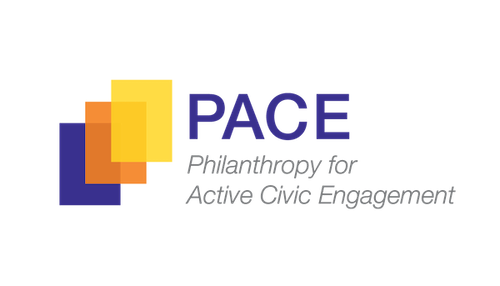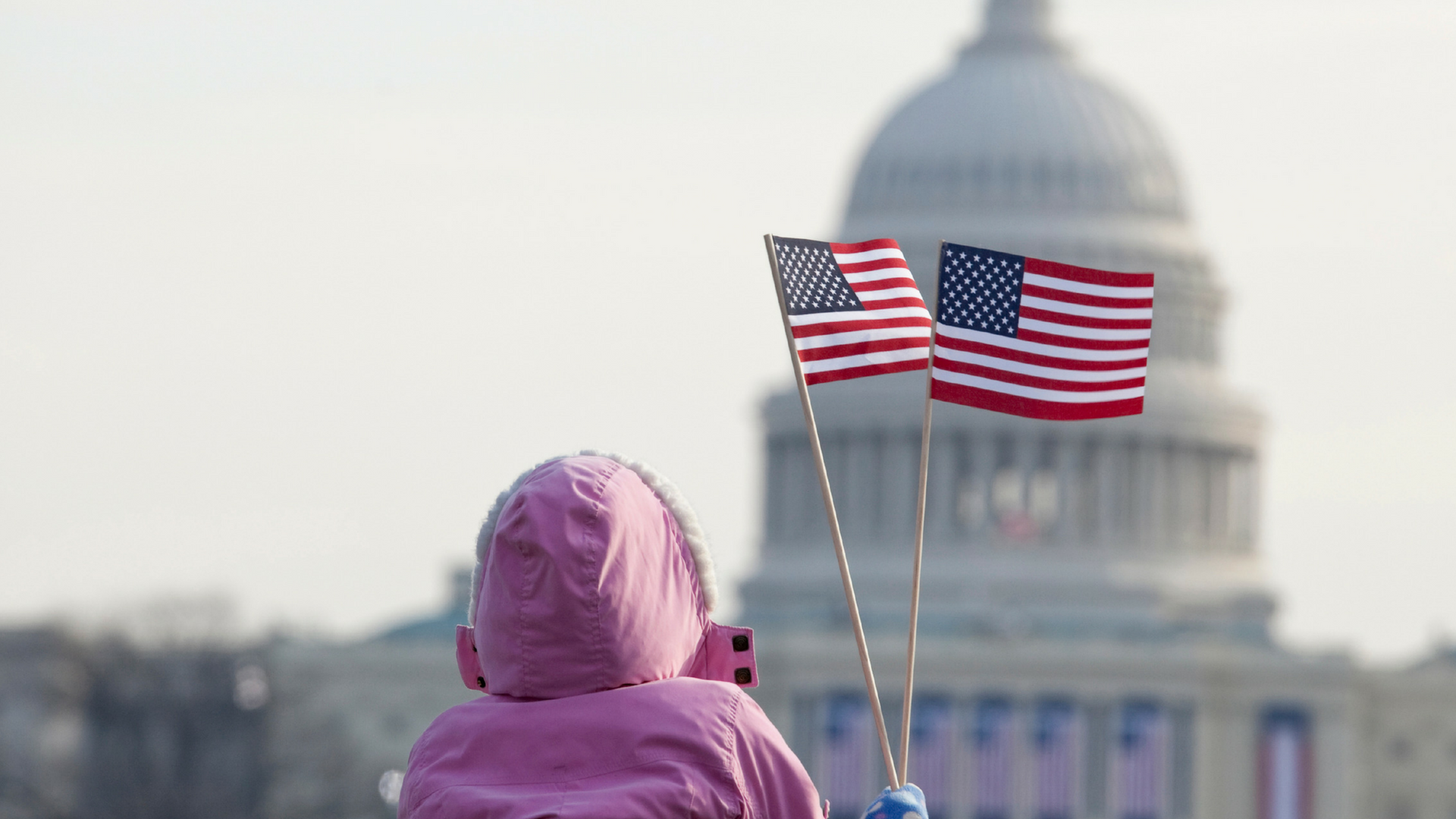Central to the ongoing dialogue around bridge building in our sector has been a call for “civility” in the public square. Stemming from the assumption that civility is the opposite of division, these calls also presume that civility is a precursor for bridge building and the only suitable tool of healthy civic discourse. Throughout this exploration, a key theme surfaced: civility is not an end unto itself. While “civil discourse” can feel like a noble goal in the context of this political moment, what became clear is that civility can be an oversimplified answer to a complex question—and calls for it risk deepening divisions by ignoring the social power dynamics at play.
Democratic discourse rests on the assumption of rationality—a logical exchange of ideas, which are fairly debated, toward a common goal of improving our people-driven government. This ideal is the foundation of our democratic process, and relies on an assumption that a common set of facts serves as a baseline for our discussions and decision-making, and that there is a process by which many people are able to share their opinions—and that their opinions can shape outcomes.
Therefore, two fundamental preconditions of democratic discourse are: that the discussion will be rational and also in good faith, and that participants rely on objective truths and respect norms of engagement. Implicit in calls for “civility” is a presumption that all participants’ ideas are equally legitimate and their interests are for the common good.
The problem, however, is that not all civic actors are acting in good faith, and furthermore, our public square is not a level playing field—the issues at the heart of our most contentious debates impact Americans in vastly different ways. For some Americans, the outcomes of debated issues will have significant and potentially negative impact on their lives. For example, the prevalence of killings of Black people by police are rarely adjudicated through legal channels, and seldom result in meaningful accountability; the “issue” of police violence is not a distant, abstract debate, but a life-and-death issue.
Naturally, emotions run high and fear runs deep, in light of many decades of these realities of Black Americans being minimized and ignored. So when we center civility in our discourse, over justice itself, we not only miss the point, but risk glossing over the very conditions at the heart of the issue. This can make calling for civility in public conversations feel like a tool for oppression.
Because of the inequity in our society, not everyone who comes to these spaces risks the same thing by existing fully in them. Members of marginalized and social minority groups must often navigate public space by silencing parts of themselves in exchange for safety. This reality speaks to the importance of both accountability and facilitation in group spaces, to make room for authentic engagement across lines of difference and power.
Furthermore, orienting bridge building efforts with civility as the end goal rather than an animating condition—and framing civic divides in ways that equivocates those participating in a debate as equally responsible for causing and solving issues that divide us—leaves many individuals unable to identify and hold accountable the specific behaviors of individuals and institutions that perpetuate the very problems we aim to solve. Science also suggests that orienting civility as the end-goal will lead to insufficient outcomes for bridge-building efforts because civility alone cannot address the animus, process, or power of intergroup bias. Therefore, dialogues across difference that do not make room to address the power dynamics at play in the issues they address make it impossible for all participants to engage as their full selves; those on the receiving end of oppressive systems and behavior are silenced, and ultimately, the objectives of bridging are hindered
Enabling Conditions for Engagement
A central aim of this exploration was to understand how to create the enabling conditions for meaningful dialogue and deliberation to happen across lines of difference. To do that, we need to better understand how to create spaces to address the social, political, existential challenges alive in our public square in a way that enables participants to show up in all their complexity, as their full selves. During this process, we spoke with several nonprofit leaders running or launching initiatives hoping to create common ground and bring people together. The positive impact of their work notwithstanding, many are forced to operate in environments where the default equivocation of the perspectives in conflict places undue pressure on them to referee an increasingly zero-sum environment.
For example:
- One nonprofit leader addressed the impact of having a discussion about immigration or policing where some participants see the exchange as purely theoretical, while others feel their safety and humanity is at stake. The power dynamics at play make it impossible for all participants to engage fully in the debate, and the possibility of reaching a meaningful conclusion all the more difficult.
- One funder stressed the importance of implementing convening strategies that make the necessary considerations and accommodations that allow all participants to show up as their full selves. Ways to consider this:
- When planning a convening, assess the current civic and political context in which that convening is being held and consider how this may impact how and why individuals show up for it.
- Where competing perspectives are asked to speak, be mindful of how these discussions are framed and managed to ensure they are working towards a thoughtful purpose.
- Consider having “un-owned” spaces—spaces that are truly intended for decentralized, public use—to engage in difficult discussions. This can help empower civic institutions (especially ones with funding to distribute) to see themselves as more than grantmakers, but also as conveners.
The reality remains that if someone does not feel safe participating fully in a discussion, this is a disservice not only to the person in question, but to everyone in the space, who therefore cannot benefit from their perspective. And what is not said in these moments may well be what needs to surface in order to more deeply understand the root of the issue and a potential path forward.
Fair Processes and Moderating Forces
Truly bridging divisions requires affirming the core values that our democratic discourse requires: rigorous discussion about ideas, opinions and experiences that are held in public; transparent procedures for discussion; accessible means of participation; and accountability among those with more decision-making power. This bridging allows disparate groups to share and exchange information, ideas, and innovation, and builds consensus among the groups representing diverse interests. This widens social capital and facilitates healthy civic discourse by increasing the ‘radius of trust’, a term coined by Francis Fukuyama. Bridge building activities can help create inclusive social and civic structures that are conducive to the health of a pluralist democracy.
To function properly, democracy requires that the branches of government and democratic institutions not just serve as a check on power, but also as a moderating/corrective force for the debates and discussions in the public square. Civic institutions have a role to moderate civic discourse. As a PACE member once said, “We want to think we’re having a national debate. But in the absence of trusted moderators, it’s not conversation…it’s just an argument.”
The lack of this moderating force has long been a structural vulnerability; however, as the speed and pace of communication has grown exponentially, so too has the impact of increasingly deleterious civic rhetoric. As the tone and health of civic discourse have declined, civic institutions have been caught ill equipped, primarily because many civic institutions often operate in different realities than regular citizens within the current political moment.
With the growth of the internet and social media as the primary tool of civic and political engagement, the relationship many civic institutions once had with their communities has fundamentally shifted. Individuals no longer need to rely solely on public spaces or civic institutions to discuss the issues of the day, which, seemingly overnight, fundamentally changed the relationship between community members and their civic institutions. Furthermore, the “attention economy” that technology, media, and other influences have created, often incentivizes negative behavior.
Consider that Facebook events replaced the bulletin board at the library. Social media provided not only breaking news but an immediate community of folks to debate the breaking news. And negative news and misinformation is shared more readily than solution-focused and facts-based reporting.
Ultimately, this moment is not a “problem to solve” as much as an opportunity to better understand the seeds of division. By doing so, we can transform the culture of civic dialogue from one of fear, mistakes, and self-interest into a culture of diversity, connectedness, and possibility.
It is no longer sufficient to know that our views are diverse—we must understand how they are made diverse, so that philanthropic institutions and other well-positioned actors can be more effective toward maintaining meaningful public discourse. In 2017, Knight Foundation commissioned a study to understand how people are discussing relevant topics; it looked at how subcultures on social media, comprised of traditionally marginalized communities including Black Twitter, Feminist Twitter, and Asian-American Twitter, interact with reporters and the news. Though the journalism community is the primary audience for this research, the learnings can help all civic institutions think of new ways to apply their convening power online and offline.
To bridge civic divides, we must embrace real engagement and debate about what drives our society and its public spaces. This approach would invigorate our politics by replacing zero-sum framing of problems with a culture that welcomes competing notions that are informed by the diverse perspectives and experiences citizens bring to the public square—ideally creating a more nuanced and vibrant civic culture. Bridging divides requires new conversations that operate out of a new context: a civic context that is driven by exploring and valuing our differences, rather than artificial similarities. And one that makes sure there are social consequences for bad faith perpetrators, and for the unwitting participants, as well as social incentives to stop playing that role.
Philanthropy’s Role
Philanthropy has historically played an important role in democratic societies, especially in the U.S. During times of great challenge in the history of our country, communities and elected leaders have looked to the philanthropic sector to frame and address the abiding problems at the heart of civil society. In turn, philanthropy has often served as a “civic and cultural” neutral party to mediate contentious rhetoric and affirm the principles and values undergirding civic spaces.
Democratic principles have sustained because they have been maintained. More than a civility strategy, philanthropy can help citizens and our leaders imagine a new civic culture—one that affirms engagement around our differences as fundamental to our common humanity and the values on which democracy relies. This approach goes beyond the idea of civility as it is most often invoked by reframing the expectation that a more robust public discourse would lead to agreement on every divisive issue. Instead, it achieves the higher goal of supporting a healthier public life and democracy.
For philanthropic institutions with visions of preserving a healthy democracy, this means stepping outside of comfort zones and taking every opportunity, in a new era of mission-driven philanthropy, to vocally proclaim the truth, our values, and the importance of holding bad faith actors and acolytes accountable for poisoning public debate.
Philanthropic institutions can begin to shape this new context by modeling a new way of engagement and debate about what drives our society and public spaces. To do so, philanthropic institutions can lean into this new flat world while affirming their convening capacity as leaders in the public sphere, and create new space to observe the ways people’s perspectives are shaped—not just to debate the substantive topics themselves but to understand the different and shared lived experiences that can influence our perspectives.

